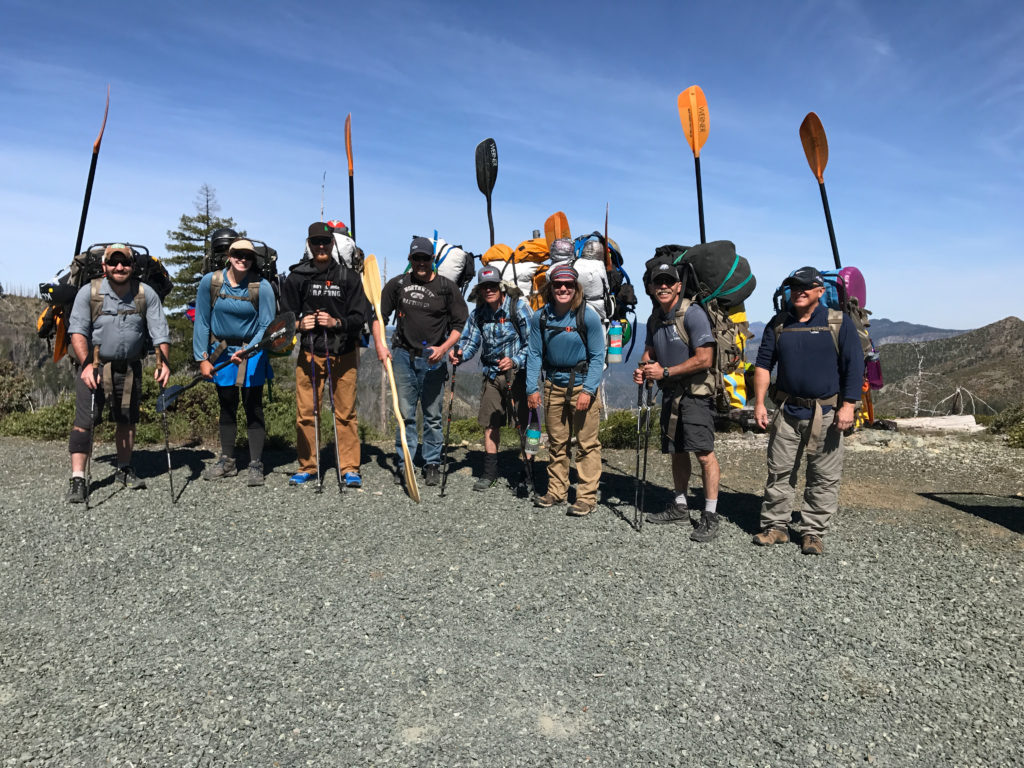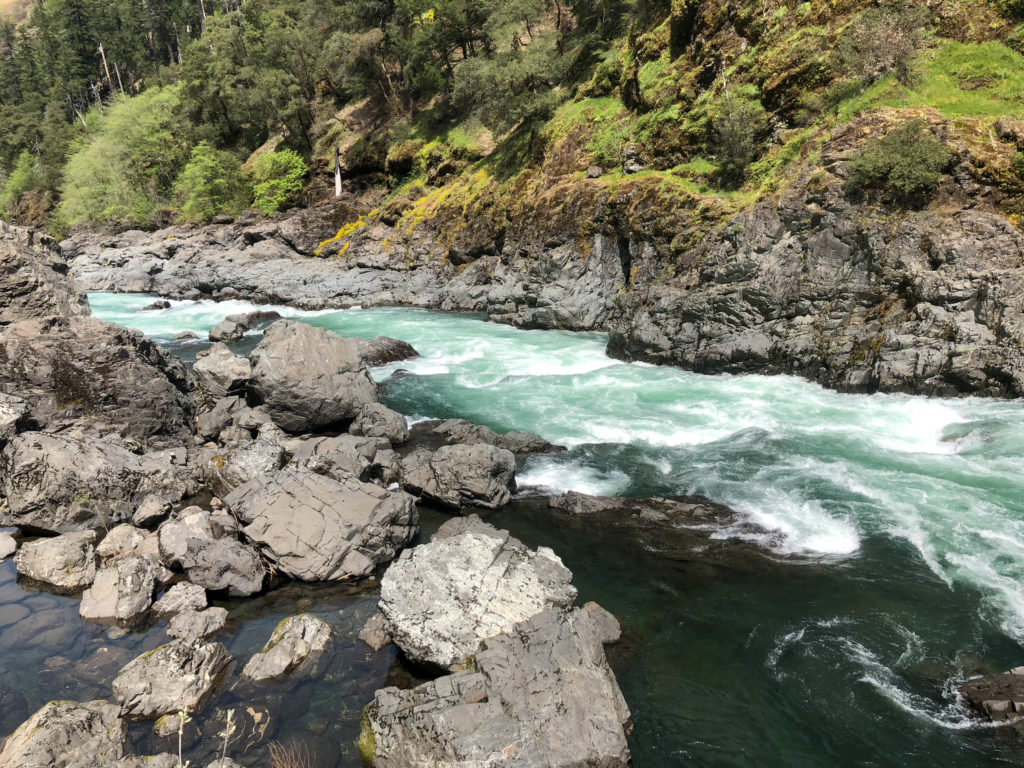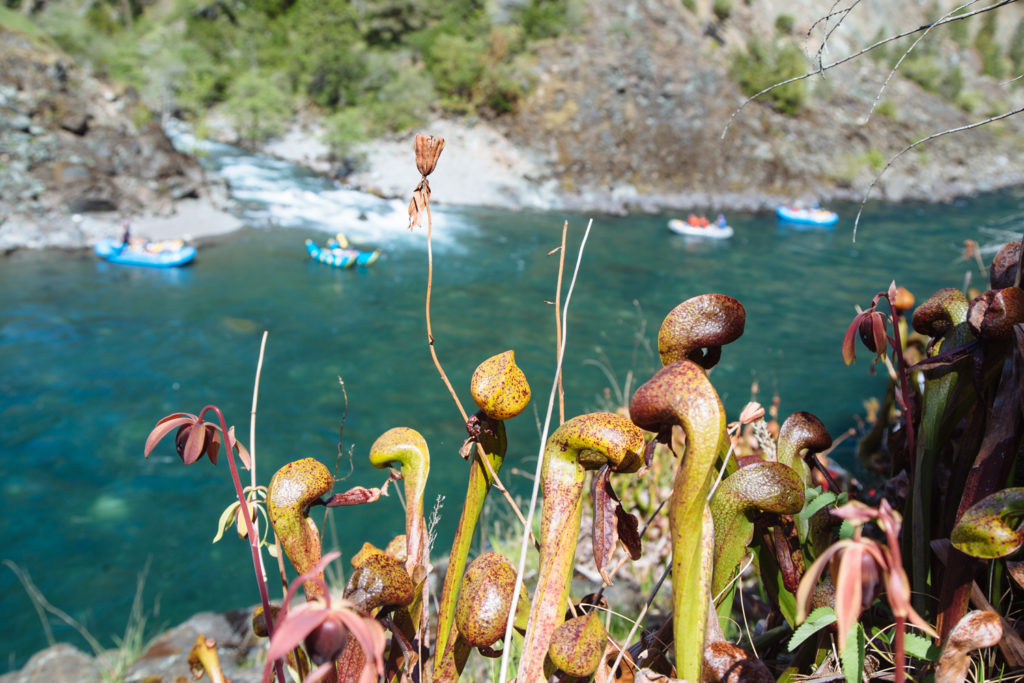The rivers of the Kalmiopsis run through remote wilderness. I feel isolated in these places, more isolated than in the Frank Church Wilderness of No Return or at the bottom of the Grand Canyon. Through my work guiding I have been lucky enough to spend time in the Kalmiopsis, and for this I am exceptionally grateful. The terrain there is rugged, making emergency access difficult at best, and evacuation extremely difficult. To enter this wilderness is a commitment to the place itself and the people you are with, a commitment to exist for a time in an untamed world of incomparable beauty and power. Welcome.

Getting There
My first experience in the Kalmiopsis was guiding a trip on the Chetco River. I was living and guiding on the White Salmon River in Washington at the time, and had only a rough idea of what was involved. I knew that the trip would be done with inflatable kayaks, last five days, and that we would be hiking ten miles to the put in with everything on our backs. I knew that the packs would be heavy and that the days on the river would be long and difficult. I had hiked heavy packs into the backcountry before, so I didn’t give it much thought when we packed our bags the night before and piled them in the van that would take us to the trail in the morning. At the Babyfoot Lake trailhead the next day we stuffed a few last-minute items into our packs and weighed them one more time. Each pack was roughly seventy pounds, and we helped hoist them onto each other’s shoulders and set off along the trail.

The first hour of the hike was a combination of excited energy and mild frustration. The excitement of an expedition finally underway was infectious, but our packs were heavy. We made adjustments, tightening straps, rearranging the helmets and paddles hung from our packs, swapping bags and bits of gear, until after a couple of miles we had settled into a steady pace. We quickly passed through the tree coverage into the massive burn area from the 2002 Biscuit Fire.

Here the hike continued steadily uphill along a hot, exposed section of trail, and fatigue started to set in. We kept moving, stopping when we needed to, shifting weight between packs, helping each other push through mental and physical barriers, until we reached an area known as the Moonscape where we regrouped and rested.

From there the trail leveled out again; we stopped to refill our water at a small spring, and we settled back into our rhythm. Things went smoothly, and we reached the eight-mile mark without much trouble. Over the final two miles the trail drops 2,000 feet in elevation, and the day had taken a toll on all of us. My legs were exhausted and I took my time on the descent, with small cautious steps, knowing that every step brought me closer to the river, dinner, and rest. With about a mile left in the hike a member of our team twisted an ankle. Two of us stayed with him to tape his ankle and help him down to camp, while two of my fellow guides hurried ahead and then doubled back to carry his pack the rest of the way. When we finally reached camp, I went down to the river and submerged myself in the bracingly cool, crystal clear water of the Chetco. The sweat and grime of the hike washed away, and I took a deep breath, knowing that I had paid my entrance fee to this spectacular wilderness.


Challenges of the Kalmiopsis

The Illinois River flows through the northern part of the Kalmiopsis before joining the Rogue River at the town of Agness. Like the Chetco, the Illinois is defined by steep, rugged terrain where rainfall runs quickly into the river. Combine this with the area’s frequent spring rains and the result is a river that fluctuates dramatically. In a matter of hours, a rainstorm can double or triple the river’s flow from a manageable and fun level to an impassable flood roaring down the canyon. These fluctuations make it difficult to plan an Illinois trip, and catching the river at a safe and manageable flow can involve a lot of watching water gauges, studying weather patterns, waiting, and a little bit of luck.
Last year I started my guiding season on the Illinois in April, when the spring rains are just winding down and the river flows are most favorable. It is a challenging start to the season. Camps can range from idyllic fields to rocky gravel bars, it is often cold and raining, and the river corridor is home to the tallest, healthiest poison oak plants I have ever seen. The real challenge though is the river itself. Our first two days involve plenty of difficult rapids, but relatively short days on the water. We take our time in the morning, enjoy hikes along the river, and get to camp with plenty of daylight left. Then comes day three, which brings us through a ten mile stretch where sheer canyon walls reach straight down to the river’s edge, and big rapids come in quick succession.

There is nowhere to camp through here, and this long section of whitewater must be tackled all at once. Even when everything goes exactly according to plan, it is a long and taxing day.
In order to safely navigate these portions of the river we start our day early, rising well before the sun to make a big pot of strong coffee and get on the water as early as possible. We float through a calm section of water, losing ourselves in the stunning scenery, until we reach a point called South Bend. Here we eat some snacks and stretch our legs before loading back into the boats. Our first big rapid is Fawn Falls, a fun drop that kickstarts our anticipation for the rest of the day.

Around the next bend we pull over to scout Green Wall. Already the run’s most difficult rapid, Green Wall is made even more challenging by the need to scout. Scouting Green Wall requires a long bushwhack down the side of the river through a never-ending forest of poison oak.

After seeing the churning water, it is not uncommon for a few guests to choose to wait for us at the bottom of the rapid. The most adventurous souls return to the boats and we run the rapid before pulling over again and eating lunch.

After lunch the rapids come in quick succession, one after another after another. By the end of the day the adrenaline, the physical and mental exhaustion, and the hooting and hollering at the bottom of every rapid have left us exhausted. We make camp late and relive the day’s adventure over a hot meal, the stories already growing funnier and more dramatic with each retelling.
Beauty

There are a lot of reasons to love the Kalmiopsis. The whitewater is world class. The water itself is somehow both turquoise and crystal clear. The plant life is fascinating. The peaks and valleys alternate between lush greens and steely rockfaces, accented by the early morning fog that creeps in overnight.

For me, though, what truly sets the Kalmiopsis apart is the isolation that I find there. Last spring I was lucky enough to make three trips into the Kalmiopsis. In that time I saw one group of kayakers who weren’t with our trip, and no one else. That intense isolation is rare in our world, and it has a profound effect on us as human beings. It brings us closer to our friends, old and new, who are with us in these places. It gives us time to breath and simply exist in a wild place, where the wilderness surrounds us and shields us for a moment from the weight of our daily lives. Within this shield, our capacity for joy and awe, fear and bravery, laughter and friendship are all expanded, and small moments take on a special significance. The isolated beauty of the Kalmiopsis allows us to be more human, whether we are staring through crystal water at the bottom of the river, scouting a line through a raging rapid, or simply watching the sun fade on the canyon walls.

